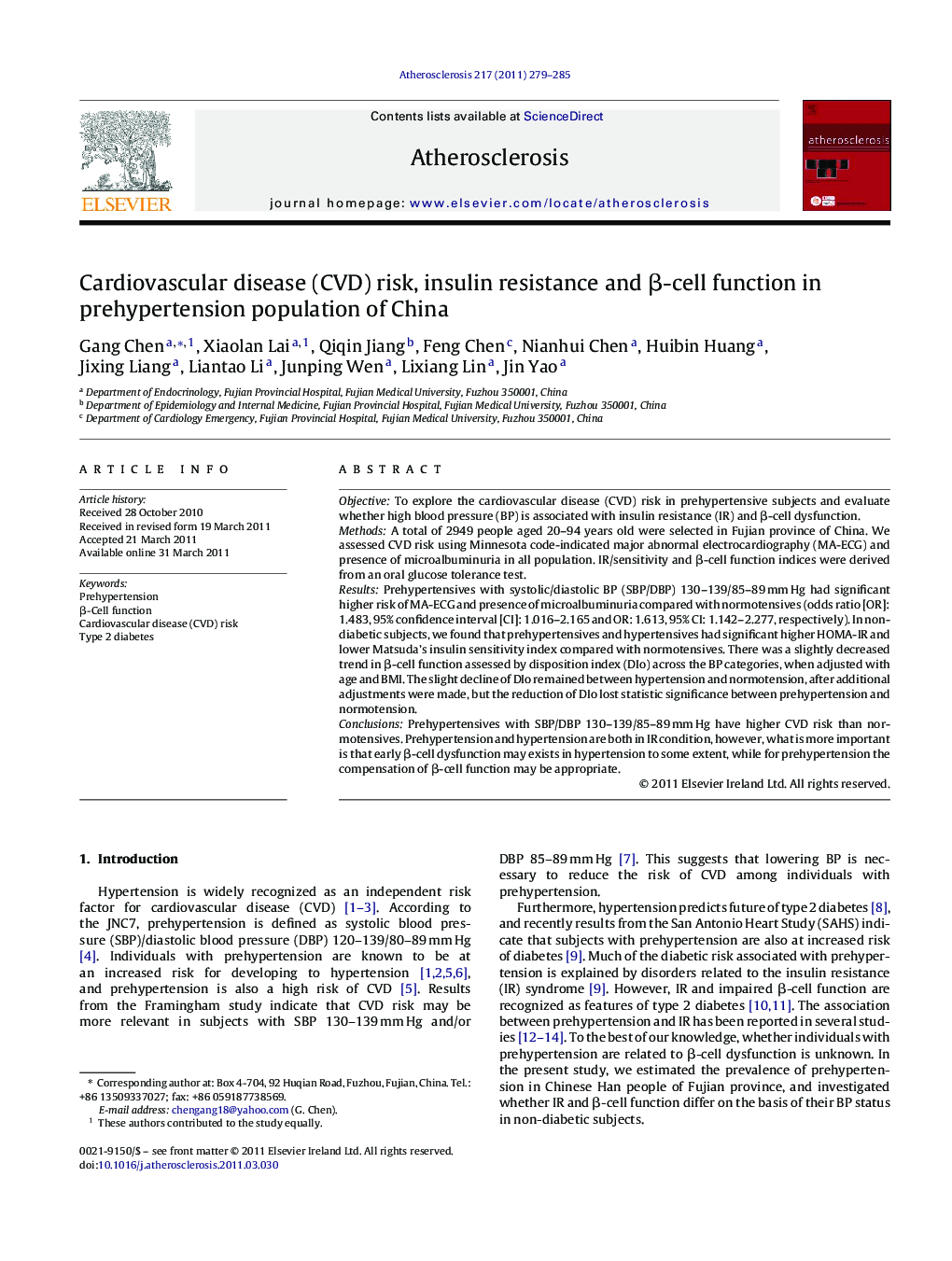| Article ID | Journal | Published Year | Pages | File Type |
|---|---|---|---|---|
| 5949658 | Atherosclerosis | 2011 | 7 Pages |
ObjectiveTo explore the cardiovascular disease (CVD) risk in prehypertensive subjects and evaluate whether high blood pressure (BP) is associated with insulin resistance (IR) and β-cell dysfunction.MethodsA total of 2949 people aged 20-94 years old were selected in Fujian province of China. We assessed CVD risk using Minnesota code-indicated major abnormal electrocardiography (MA-ECG) and presence of microalbuminuria in all population. IR/sensitivity and β-cell function indices were derived from an oral glucose tolerance test.ResultsPrehypertensives with systolic/diastolic BP (SBP/DBP) 130-139/85-89 mm Hg had significant higher risk of MA-ECG and presence of microalbuminuria compared with normotensives (odds ratio [OR]: 1.483, 95% confidence interval [CI]: 1.016-2.165 and OR: 1.613, 95% CI: 1.142-2.277, respectively). In non-diabetic subjects, we found that prehypertensives and hypertensives had significant higher HOMA-IR and lower Matsuda's insulin sensitivity index compared with normotensives. There was a slightly decreased trend in β-cell function assessed by disposition index (DIo) across the BP categories, when adjusted with age and BMI. The slight decline of DIo remained between hypertension and normotension, after additional adjustments were made, but the reduction of DIo lost statistic significance between prehypertension and normotension.ConclusionsPrehypertensives with SBP/DBP 130-139/85-89 mm Hg have higher CVD risk than normotensives. Prehypertension and hypertension are both in IR condition, however, what is more important is that early β-cell dysfunction may exists in hypertension to some extent, while for prehypertension the compensation of β-cell function may be appropriate.
